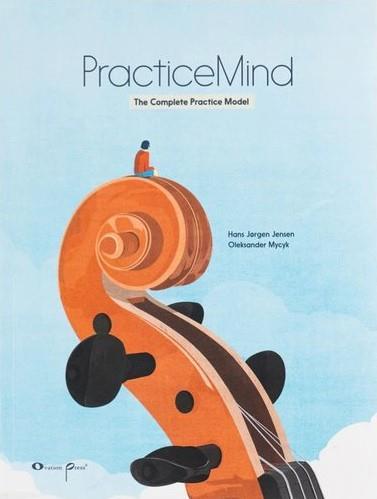Janet Banks reviews the latest volume by Hans Jørgen Jensen and Oleksander Mycyk on the best methods of practising the cello

Practice Mind: The Complete Practice Model
Hans Jørgen Jensen and Oleksander Mycyk
201PP ISBN 9780578320441
Ovation Press $64.99
Whether you have six minutes or six hours to practise in, this impressively comprehensive book, aimed at string players specifically, should help you get maximum benefit from the time.
The book is structured around the ‘plan, implement, evaluate’ model, covering topics such as making a practice journal, using a metronome creatively, the importance of studying the score, and the importance of recording and listening back to your practice. ‘The fear of facing reality’ is suggested as a reason why so many musicians prefer to avoid this!
Although its basic premise of planning your practice, thinking about what you’re doing (‘metacognition’) and constantly evaluating it, is useful for anyone, the book feels primarily aimed at college or postgraduate students aiming at a professional career or those already playing professionally – the people who Jensen, professor of cello at Northwestern University – and his doctorate student, Mycyk, also a teacher and professional orchestral player, spend their lives with.
Read: Technique: Velocity studies with Hans Jørgen Jensen
Read: Cellist Sydney Lee wins $50,000 fellowship
Review: J.L. Adams: The Wind in High Places; Canticles of the Sky; Dream of the Canyon Wren
The first section, the Practice Mind, looks at the psychology of learning, motivation and ways of harnessing the mind for more effective outcomes, often referring to techniques used in elite sports training. The authors suggest reading this section first, though many students might find it heavy-going, and then studying the other chapters as required.
At 200-odd A4 pages it is certainly not an easy read, and might appear off-puttingly weighty to most students, who might hope to have many of these suggestions conveyed through their teachers rather than having to find them in a book. To counteract this, efforts have been made to make the book more user-friendly. The text boxes ‘From Hans’ and ‘From Oleksander’ containing little asides from the authors’ personal experience, are always instructive, as are the scenarios of particular students and their challenges. The two-column format breaks up the text, but sometimes when a music example or diagram is inserted, it is not entirely clear where to read next.
JANET BANKS


































No comments yet